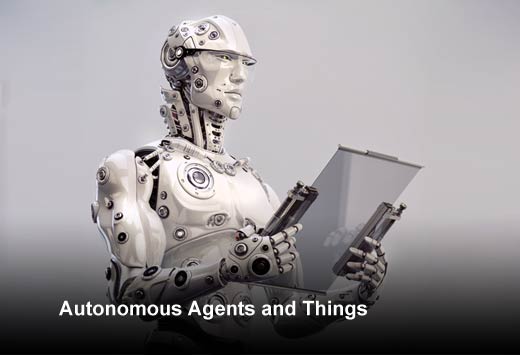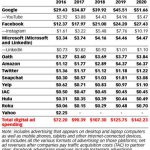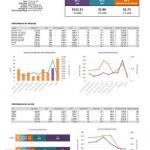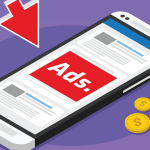The Rise Of Autonomous Agents (And The End Of Advertising)
by Josh Engroff, December 16, 2016

“If you don’t know me by now, you will never never never know me.” — Harold Melvin and the Blue Notes
Two things we heard a lot about in 2016 were “autonomous cars” and “bots,” but rarely in the same sentence. True, they both share the common thread of AI, which powers the “self” in self-driving cars (computer vision, decisioning) and the chatty personalization of bots. But that’s where the similarity ends, because most bots don’t employ real AI or machine learning, but are just collections of “if-then” statements in a new package.
Indeed, two of the things we might most associate with 2016 are “bot hype” and “bot fatigue,” which is due, no doubt, to the utter triviality of most bots. However, a number of things happened this year that carry true significance for 2017 and beyond:
— Amazon saw real success with Echo and Alexa
— Google launched Google Home, the family-room friendly container for Assistant
— Google launched the Actions on Google platform, allowing developers to create actions for Google Home (similar to what Amazon did with the Alexa Skills Kit)
— Microsoft’s Bot Framework is now used by more than 45,000 developers
— Google acquired API.ai, a bot-building platform
— Facebook Messenger bots now accept payments from customers without making them leave Messenger
The developments above, combined with the growing demand for automation and personalization in all areas of life, will impact media and advertising significantly in the years to come. To understand why this is so and how it might play out, you have to understand where the friction points are: What does advertising not do well? What makes consumers happy or unhappy? What common interests, if any, unite brands and consumers? What does automation at scale in a retail context even look like?
The inefficiency of indirect advertising
The point of advertising is to get people to buy something. That shouldn’t be so hard, since people, especially U.S. people, love to buy things. For better or for worse, the U.S. is a consumption-driven culture, with $4.7 trillion in annual retail sales and more than a fifth of the world’s total. But every year, millions of dollars in advertising are wasted, for various reasons: It reaches the wrong people, or it reaches the right people but with the wrong message, or it reaches the right people with the right message, but the path to purchase is either friction-packed or unmeasurable.
Empowering consumer self-quantification
At the same time, there is no great way for a consumer to raise a hand and say “Here are the exact products I buy in your category. Want to do a deal? I’m listening.” To date, all the targeting innovation has been on the brand side, through pixels, tags, cookies, CRM and DMP IDs, etc. Whether they want it or not, consumers are being quantified. The huge rise in things like ad blocking, OTT streaming and time-shifting suggests that ads aren’t necessarily the best way to do this.
What if consumers had the means to fully capture the value of their own purchasing power — and could do in a way that was not only frictionless, but saved them time, spared them the barrage of irrelevant advertising, and put them on a data parity with brands?
Consumer bots as autonomous agents
Enter the semi-autonomous agent. This would be a consumer “bot” that works on any platform – Facebook Messenger, Kik, Google Home – where brands are present. The purpose of this bot is to negotiate and transact with brand bots on your behalf.
To ensure that your “MeBot” is fully equipped to be a great negotiator—and in an inversion of the “do not track” paradigm—you tell it everything about yourself. You authorize it to access your credit card and checking accounts, as well as your summary sources of personal financial data, like Mint and Personal Capital.
From this data your MeBot learns your product preferences – the things you actually buy, not what you claim to like on Facebook – and is able to estimate the timing of future transactions, based on your personal replacement cycle (e.g., you tend to upgrade your iPhone every 12 months, 50% faster than the category average) as well as external factors (e.g., the end of a car lease).
Armed with this information, and knowing your in-market status for hundreds of items – from air travel to electronics to food to spin classes – your MeBot solicits offers directly from relevant brand bots, filters the best, and serves them up to you. This works in all kinds of scenarios, from loyalty to conquesting to discovery:
— You love Beats headphones, but the last pair you last bought was the wired version a year ago? Your MeBot brings you an offer for 10% off the new Powerbeats.
— Your Mercedes lease is up in three months? Your MeBot brings you an offer for $3,000 off the new BMW X5.
— You love German beer but weren’t aware that New Belgium just launched an Oktoberfest series? Next time you’re checking out at Whole Foods, the clerk hands you a free six-pack (and some pretzels). Negotiated in advance, of course, by your MeBot.
Done without bots, none of the above is precise, scalable, or obviously better than media-based solutions. In fact, it looks a lot like couponing.
Done with bots, however, the advantages are huge. By automating the most tedious and time-consuming parts of these transactions, everyone benefits. Consumers get huge amounts of time back, because they no longer have to think about (or even encounter) thousands of offers bombarding them every day in every channel. Brands stop wasting money shouting at users through unattributable media channels and get to know their audiences directly.
Agencies benefit too, because advertising doesn’t actually end, it just gets to that place it’s already heading anyway: content. Great creative agencies are expert storytellers, and consumer demand for compelling content is only going up. At the same time, the most technology-friendly people in the industry work at great media agencies, a role that becomes only more important as media and technology become increasingly synonymous.
For any of this to work, two things are required: scale and privacy. No consumer is going to trust her valuable financial data without absolute certainty that it’s encrypted, protected, and secure. Such a company would have to have bulletproof technical and financial reliability.
And similarly, no consumer is going to adopt an “autonomous agent” unless it delivers both huge utility and zero friction. “Utility” here depends on network effects: If all brands are using this, I will use it. And “zero friction” depends on seamless data integrations with every possible partner at every point in the process.
The list of companies that could accomplish both of the above is very short. Four of them go by the initials GAFA.
MediaPost.com: Search Marketing Daily
(100)












